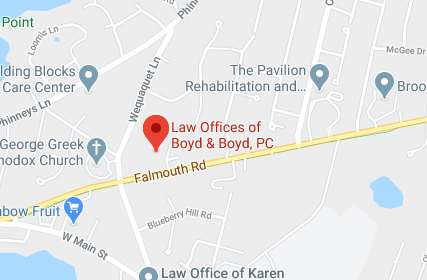President Biden signed into law a $1.7 trillion budget on December 30, 2022. Buried within the law is legislation that revises retirement plan law. This portion of the law is referred to as “SECURE Act 2.0”. The new law is complex with many provisions that impact retirement plans. Here are a few key provisions that might impact your estate planning:
RMDs: While there are a number of changes, the important changes for most retirees relate to the change of the age for Required Minimum Distributions (RMDs). Under the prior law the age to begin RMDs was 72. Under SECURE Act 2.0 the age for RMDs is changed beginning in 2023. Individuals turning age 72 in 2023 or later will start their RMD at age 73. Anyone reaching age 74 after December 31, 2032, will have an RMD at age 75. However, you must continue taking RMDs as scheduled if you turned 72 in 2022 or earlier. Those eligible for deferring RMDs to 73 or 75 need to keep in mind that the RMD will be larger because of the way RMDs are calculated. A larger RMD may push you into a higher tax bracket.
Catch-up Contributions: Beginning on January 1, 2025, people ages 60 to 63 will be able to make catch-up contributions to a workplace plan up to $10,000 per year, with the amount being indexed to inflation. The catch-up amount for people 50 and older in 2023 is currently $7,500. But there may be a trap for some taking advantage of catch-up contributions – if you earn more than $145,000 in a prior tax year, all catch-up contributions at age 50 or older will need to be made to a Roth account in after-tax dollars. Individuals earning $145,000 or less, will be exempt from the Roth requirement. The $145,000 threshold will be adjusted for inflation going forward.
Qualified Charitable Contributions (QCDs): Starting in 2023, individuals who are 70½ or older may choose to designate a portion of their QCD limit as a one-time gift to a charitable remainder unitrust, charitable remainder annuity trust, or charitable gift annuity of up to $50,000, adjusted annually for inflation. By adding CRTs, the law expands the type of charities that can receive a QCD. For anyone who has an RMD, a QCD amount counts toward the annual RMD. In order for the gift to qualify as a QCD, the distribution MUST be paid directly from the IRA custodian to the charity; you cannot receive any of the QCD funds. Additionally, the funds must be paid directly from your IRA by the end of the calendar year. There are limits on the types of charities eligible to receive a QCD. For example, QCDs cannot be made to Donor Advised Funds. Finally, QCDs are advantageous because the gift is not included in your taxable income (but there is no charitable deduction either).
529 Plans: Subject to annual Roth contribution limits and an aggregate lifetime limit of $35,000, 529 plan assets can be rolled over to a Roth IRA for the beneficiary after 15 years. A 529 rollover is treated as a contribution toward the annual Roth IRA contribution limit.
Estate Planning Opportunities under SECURE Act 2.0: Roth Conversions continue to be a popular estate planning technique, and SECURE Act 2.0 really doesn’t change this. In fact, it gives up to three more years of opportunity to make Roth Conversions by pushing back the age for RMDs to 75. Presumably, after retirement but before starting RMDs, an owner of a traditional IRA will have a lower income between age 70 and 75. This period of lower income, is an opportune timeframe to take advantage of Roth Conversions.
One opportunity that many younger families (59½ to 75) should consider is a “Non-Roth” Conversion. This technique couples the income tax free benefits of a Roth IRA with excluding the Non-Roth funds from the taxable estate. A regular Roth Conversion remains a part of your taxable estate.
Finally, SECURE Act 2.0 makes 529 Plans more attractive as a wealth transfer technique. 529s can be “front-end loaded”, meaning a grandparent may gift five years’ worth of annual gift tax exclusion ($17,000 in 2023). In other words, you may gift up to $85,000 per student this year. You will not be able to make any other gifts to the student for the next five years (that includes birthdays and holiday gifts). Some people gift less than five times the annual gift exclusion, so that they may also give on birthdays or holidays. By front end loading a 529 this way, investments can grow in a tax deferred account for a longer time, thereby providing more money to the student for educational needs. The new rule allows the student the flexibility to roll any unused 529 funds into an IRA after 15 years. This way funds are not lost to tax penalties that would otherwise exist for withdrawing from a 529 for non-educational reasons.










